Skin
Skin problems are associated with its individual layers – both the surface of the epidermis and dermis, subcutaneous tissue, as well as sebaceous, sweat glands, hair follicles and nails.
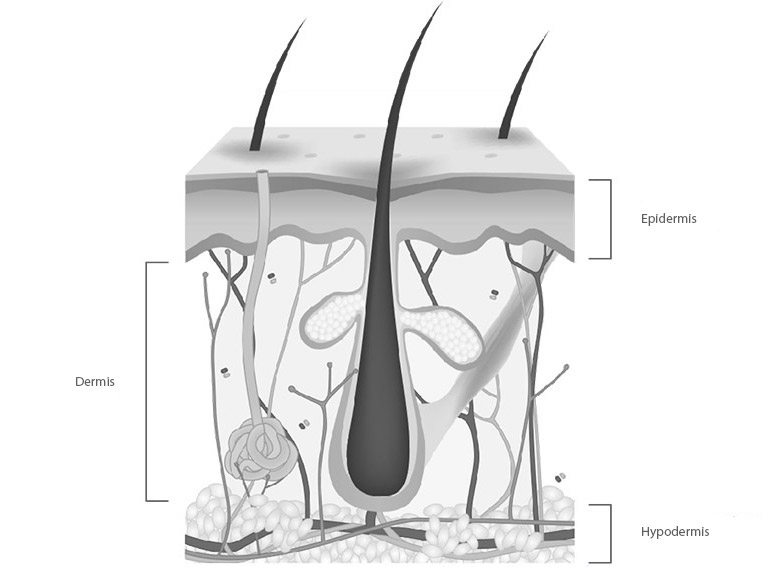
Dermatosis is a skin conditions, which causes are very diverse from genetically determined to acquired. The causes of dermatoses are very different, among the most popular are allergies, autoimmune reactions, bacterial and fungal infections, parasites (mites, lice, scabies) and viruses (e.g. herpes).
of population struggles with the dermatosis problems
in the form of atopic dermatitis
Skin problems are associated with its individual layers – both the surface of the epidermis and dermis, subcutaneous tissue, as well as sebaceous, sweat glands, hair follicles and nails.

The most common skin diseases are:
- atopic dermatitis (AD)
- skin mycoses
- psoriasis
- seborrheic dermatitis
Special care needs also very dry and sensitive skin as well as children’s skin.
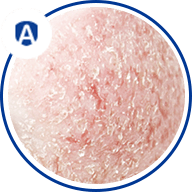
Atopic Dermatitis
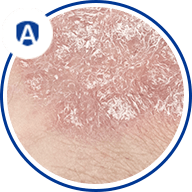
Psoriasis
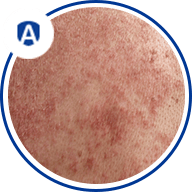
Seborrheic dermatitis

Atopic dermatitis or atopic eczema is the most common skin disease, which first symptoms usually appear in early childhood.
According to some statistics, 10-20% of children and 1-3% of adults all around the world suffer from AD. 60% of children experience the first symptoms of it during the first twelve months of life. The symptoms continue up to the age of five among 90% of children.
The disease is caused by genetically determined structure of the epidermal barrier. A deficiency of free fatty acids in this area facilitates the penetration of allergens which intensifies the symptoms
of inflammation and itching. The epidermis is dry and thickened. Atopis dermatitis may occur together with other allergic diseases such as: bronchial asthma, allergic rhinitis, hives and food allergy. Environmental factors such as house dust allergens – mites, animal dander, pets hair, fungal spores and plants pollen have a significant influence on the development and enhancing of Atopic Dermatitis.
Typical symptoms include mainly the following: pruritus, dry skin, eczema-like inflammatory lesions and thickening of the skin (lichenification). The epidermis of people with AD consists of less ceramides and free fatty acids. For this reason, less water is bounded in the epidermis, thereby it evaporates faster. This reduces the elasticity of the skin, which becomes more susceptible to microtrauma and cracks.
The disease may occur together with other atopic diseases such as: bronchical asthma, allergic rhinitis, hives and food allergy. Allergens such as mites, animal dander, pets hair, fungal spores, plants pollen and food have a direct impact on atopic dermatitis. They are absorbed through the respiratory tract, gastrointestinal tract and the skin.
Roll up UnrollIts symptoms manifest themselves immediately after birth – skin becomes dry or there are skin lesions, such as erythema or exudate. They are located mainly near elbows and knee creases.
The dryness of the epidermis is accompanied by exfoliation and roughness. Skin thickens in the skin folds and on the forehead. On the elbows and knee creases there are alveolar-follicular lesions.
In adult patients, skin lesions are usually present at elbows and knee creases and at the base of the neck. The lesions can cover a large part of the body and usually are more visible on the neck and face.

Psoriasis is a skin disease, which causes are not completely known. It is a chronic, non-infectious disease and it has tendency to spontaneously regress and reoccur. The disease usually appears between the ages of 10 and 40, and more often in older people.
The factors causing the disease and its relapses include acute bacterial infections, like streptococcal and viral infections like angina, measles, smallpox, shingles, rubella, but also chronic infections like sinusitis, cavities, recurrent UTI, adnexitis, cholecystitis, hypertrophy tonsils and chronic diseases like diabetes and gout.
Psoriasis can also be caused by stress - both acute and psychological shock.
In the properly functioning skin, the life cycle of the skin cells (development, maturation and death) lasts 26-28 days. In psoriasis, the immune system sends signals that shorten the entire process to about 4 days. New cells mature fast and the old ones do not keep peeling off. That is a reason why the skin of the people diagnosed with psoriasis becomes much thicker than the healthy ones. A layer of dead cells is formed on the body in the form of hard scales.
Skin with psoriasis requires special care. Daily care should ensure proper hydration and lubrication of the skin and facilitate exfoliation of callused epidermis. The particularly valuable for the skin are urea, which helps to retain water in the skin and natural vegetable oils, which are rich in unsaturated fatty acids.
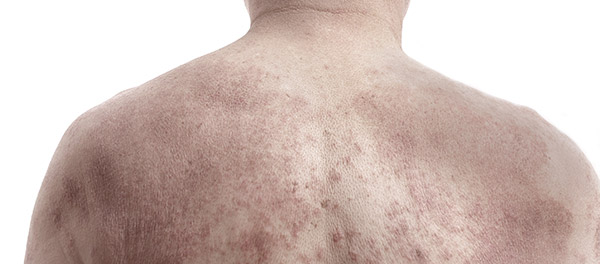
It is an inflammatory skin disease that usually affects young people, usually between 18-40 years of age.
It involves increased activity of the sebaceous glands of the skin and excessive production of sebum. It mainly includes places where the most sebaceous glands are found: on the scalp, forehead, nose, nasolabial folds and behind-the-ear folds, near the sternum and between the shoulder blades.
It is often accompanied by hair loss, scaling skin, erythema spots.
The occurrence of the disease may be genetically determined or come from superinfection of Malasezzia furfur fungus. The disease is accompanied by abnormal epidermal function and excessive exfoliation. Treatment of the disease should be based on inflammation relieving and eliminating yeast-like fungi. It is important to use products that relieve pruritus and burning sensation of the skin.